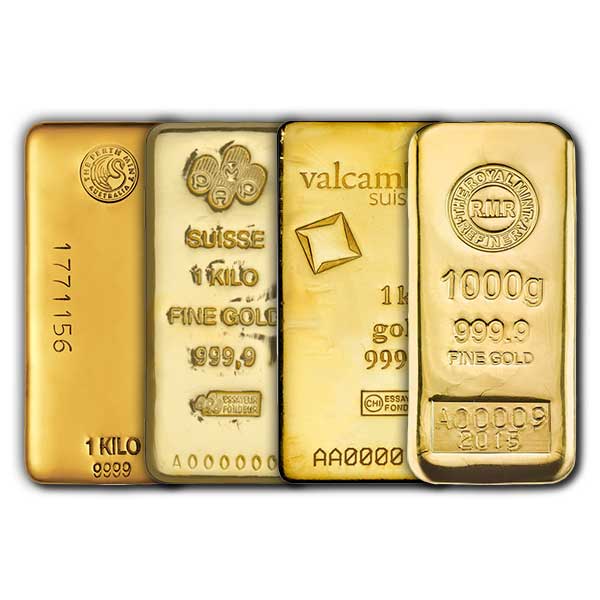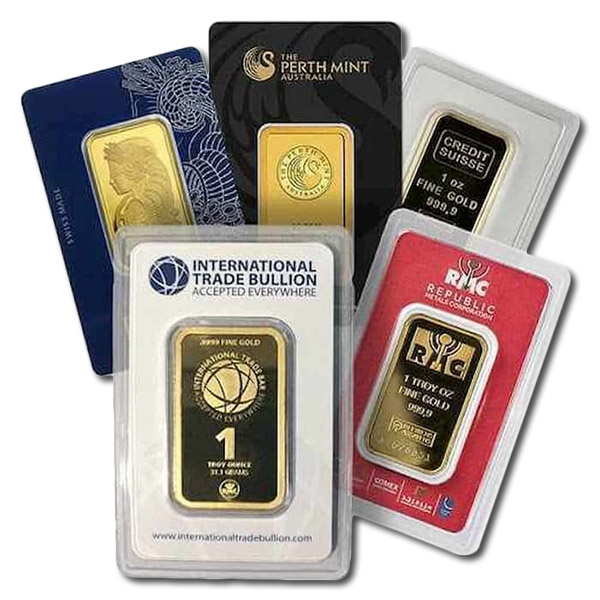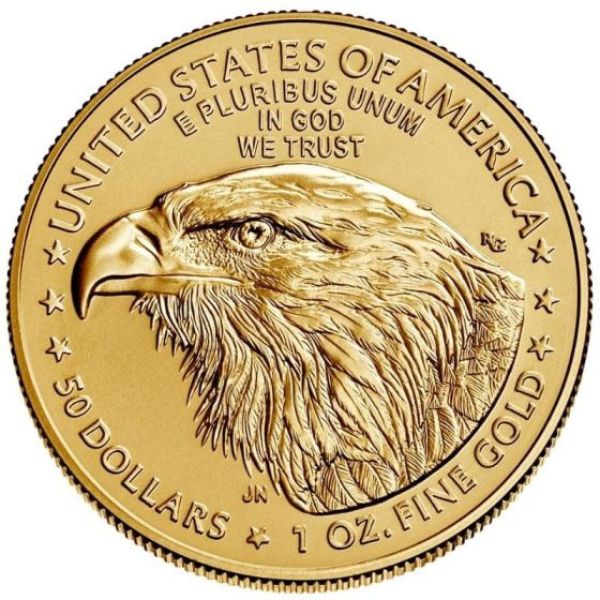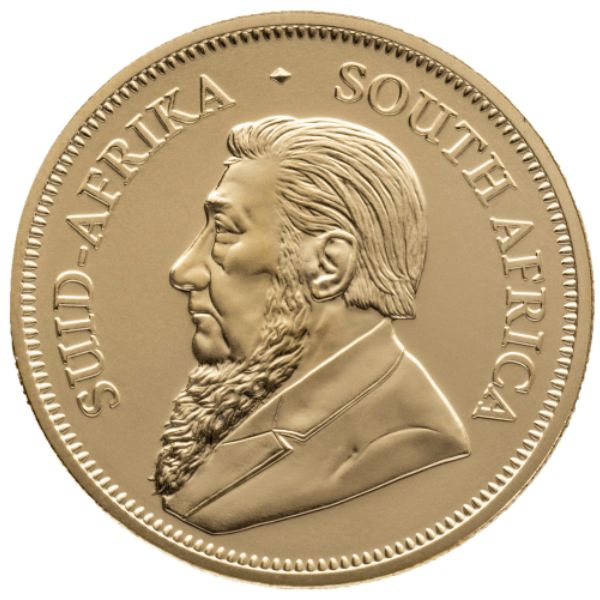A Brief History of Gold Prohibitions

In the modern era, it’s almost impossible to imagine gold being illegal. In the United States, investors are free to invest in whichever assets they prefer – including gold. With no clear limits placed on how much gold you’re allowed to stack, investors in 2023 are used to being in complete control of their precious metal portfolios.
But what if we told you that holding gold privately used to be illegal? That’s right. For a long period of time in the 20th century, the United States government made it a crime to keep a personal stash of gold in your home safe or depository box.
To collectors in 2023, this might sound unbelievable. However, we think it’s important for new investors to learn a bit about the history of gold prohibition. In today’s Bullion Academy guide, we’re taking a look at the long history of gold prohibition that dominated over 40 years of the 20th century.
Is it Illegal to Hoard Gold?
Is it illegal to hoard gold? Absolutely not. Nowadays, investors like you are completely free to buy as much gold as you’d like. Some investors like to buy small gold coins and bars every once in a while. Others have put tens of thousands of dollars into this inflation-proof safe haven asset.
No matter how you decide to stack gold, there’s nothing illegal about buying and holding gold bullion coins and bars. But gold investors didn’t always have it this good. In fact, some people throughout the history of gold prohibition were actually arrested for the crime of privately owning and trading gold.
What is a Gold Prohibition?
So what is a gold prohibition? For most students of history, the term ‘prohibition’ is usually related to alcohol. It’s true – the most famous prohibition in U.S. history was the ban on the sale and consumption of alcohol from 1920 until 1933.
Another, slightly less famous prohibition first happened the very same year that prohibition was officially repealed. The concept is basically the same. A gold prohibition happens when a government decides to make it illegal for individuals, corporations, or government entities to buy and store gold bullion privately.
Our journey to discover the roots of the history of gold prohibition in the United States begins below.
History of Gold Prohibitions in the United States
Two main legal actions contributed to the history of gold prohibition in the United States: Executive Order 6102 and the Gold Reserve Act of 1934. We’ll talk a bit about a third, smaller gold prohibition later in this guide. But for now, let’s take a look at the very first stop in our exploration of the history of gold prohibitions.
Executive Order 6102: Making Gold Illegal
The prohibition of alcohol ended in 1933. Although this was great news for bars and casual drinkers, it also happened at a troubling time in American history. President Franklin D. Roosevelt found himself in charge of a country that was now deep in the middle of its biggest economic crisis: the Great Depression.
At the time, the United States Dollar was pegged to the value of gold. This is what we refer to as the “gold standard,” an economic system that the U.S. no longer uses. In order to understand the reasons for the history of gold prohibitions, we need to have a firm grasp of why the U.S. government had reason to ban gold holdings in the first place.
Because of our gold standard, the private hoarding of gold was becoming a problem. Roosevelt noticed that a number of wealthy Americans were buying and holding onto large amounts of gold. These investors felt that gold was a safer bet than traditional stocks, so they’d pulled their money from the market in favor of precious metals.

As a result, Roosevelt passed Executive Order 6102, which made it illegal to hoard gold coins, bars, and even gold certificates inside of the United States.
This was, of course, met with significant backlash. The President’s order stipulated that investors needed to surrender their gold holdings to the Federal Reserve Bank on or before May 1st – less than a month after the EO was passed on April 5.
Arrests and Prosecutions
To gold investors at the time, this was a tremendous blow. Roosevelt’s intentions made sense, at least to many economists at the time. If people were disallowed from hoarding precious metals like gold, they’d be forced to invest directly into the economy, which might help pull the country out from the throes of the Great Depression.
Not all gold stackers complied with Roosevelt’s Executive Order, however. Because the Executive Order came from the President and was not yet Congressional law, it became an objective of the Executive branch to find ways to strengthen the order’s legal standing using successful prosecutions.
The history of gold prohibition was strengthened by the prosecutions that followed. The first documented arrest during gold prohibition was an attorney from New York, Frederick Barber Campbell. He had deposited 5,000 troy ounces of pure gold bullion at a Chase Bank.
Pursuant to the new Executive Order’s rules, Chase did not allow the attorney to withdraw his gold when he decided he wanted to cash out. Campbell launched a lawsuit against Chase Bank, and the Federal government responded by arresting and charging him for violating the Executive Order by attempting to hoard gold.
The prosecution was not successful, but that didn’t stop Roosevelt from trying again. In the decades that followed, a number of U.S. citizens were arrested.
During this brief history of gold prohibitions, Roosevelt needed to find a way to strengthen his Executive Order banning the possession of gold. After all, the last thing he wanted was to continue to fail in prosecuting violators of his new law.
The Gold Reserve Act of 1934
Roosevelt’s greatest asset during the history of gold prohibition was likely the passage of the Gold Reserve Act of 1934 by Congress. The primary purpose of this law was to abolish the longstanding tradition of the Federal Reserve and financial institutions issuing gold bullion in exchange for U.S. dollar bills.

Additionally, however, the Gold Reserve Act of 1934 reaffirmed Roosevelt’s opinion that gold should be surrendered to the Federal Reserve and protected by the Department of the Treasury. As a result, Roosevelt got what he wanted – his Department of Justice was now free to prosecute citizens who violated the prohibition of gold.
Arrests following the Gold Reserve Act of 1934 were plentiful. Jewelry seller Gus Farber of San Francisco was arrested and charged after a massive, tri-state sting operation exposed him and 13 other people for their plot to sell 13 gold coins to investors.
We could go on for days. The history of gold prohibition is one of the most fascinating periods in United States history. Roosevelt’s bid was successful, and Congress’ passage of the Gold Reserve Act of 1934 gave him a powerful weapon to strengthen his ban on private gold hoards.
When Was it Illegal to Own Gold Coins?
The prohibition of gold didn’t last forever, but it may have seemed that way for investors who were forced to surrender their holdings to the Federal Reserve Bank.
When was it illegal to own gold coins? It was illegal to own gold coins in the United States from 1933 until 1974, when President Gerald Ford once again allowed private investors to buy and hold gold bullion.
Repeals in the History of Gold Prohibitions
On December 31st of 1974, President Gerald Ford gave a fantastic late Christmas present to American gold stackers. He signed a bill from Congress which made it legal for private citizens to invest in – and hoard – gold bullion.
Why was gold illegal in the first place? For investors who want to understand the history of gold prohibition, this is an important question. The answer is pretty simple: gold was banned in an effort to revive the stalling U.S. economy during the Great Depression.

Because the United States was still operating under the gold standard in the 1930s, people hoarding gold was a big problem. The U.S. government’s gold reserves were floundering, and people buying gold meant that they weren’t directly investing in the actual stock market – which was in shambles by 1933.
But by 1974, the remnants of the old gold standard had been completely abolished. Instead, the American currency became completely fiat. In other words, its value was no longer dependent on the U.S. government being able to back it with gold bullion.
The history of gold prohibition in a general sense ended with Gerald Ford. He and Congress agreed that a ban on gold hoards was no longer necessary, given the abolition of the gold standard. From that point forward, investors were free to buy as much gold as they wanted.
However, the true history of gold prohibitions didn’t quite end there. The U.S. government would go on to make one more decision that some considered a gold prohibition. Let’s talk about the embargo on the Gold Krugerrand, one of the most impactful precious metals laws to ever be put into effect by the United States government.
Gold Krugerrand: The Banned Gold Coin
The Gold Krugerrand is an iconic gold coin for a couple of reasons. First, the coin was the most popular gold coin in the world for several years. But more importantly, the coin made it into history books by being one of the first individual bullion coins to be the subject of a U.S. embargo.
Just over ten years after the 40+ year history of gold prohibition ended, the U.S. government announced that they were placing an embargo on the import of Gold Krugerrands. The reasoning for this ban on Gold Krugerrands had a lot to do with controversy surrounding South Africa, the country that mints the Krugerrand.

At the time, South Africa was still practicing the Apartheid system, a racist system of government that segregated Black and white South Africans. To protest the system and put pressure on the South African government, U.S. Congress made it illegal to import Krugerrands into the country.
Some investors saw this as a continuation of the country’s history of gold prohibition. In fact, a large group of gold collectors began buying and selling the coins in a panic, fearing that it was now becoming illegal to possess them entirely.
The truth, however, was that this wasn’t actually a gold prohibition. Unlike Roosevelt’s Executive Order 6102, this law didn’t make it illegal to own Gold Krugerrands – only to import them.
The Gold Krugerrand ban was eventually ended, and collectors today are free to stack one of the most popular gold coins in history.
The Modern Era
So where does this leave us today? The history of gold prohibitions in the United States is a subject of concern for many modern investors. If you read message boards, watch videos, and generally engage with the stacker community, you’ll hear a lot of chatter about the possibility of a gold confiscation.
Is it Still Illegal to Hoard Gold?
However, it’s unlikely that the United States will ever see another gold ban. As far as we’re concerned, the history of gold prohibitions ended with the repeal of Roosevelt’s ban in the 1970s.
Part of the reason a gold ban was considered necessary when it happened was that the U.S. was still engaged in the gold standard at that time. Now that our currency isn’t linked to gold, a gold ban just wouldn’t make much sense.
Final Thoughts: Tracking the History of Gold Prohibition
Some investors are concerned about the possibility of a gold confiscation. The good news is that the Federal government has little to no reason to ban the private hoarding of gold bars and coins. Instead, modern investors should feel confident that their gold stacks aren’t going anywhere anytime soon.
You might also be interested in:
About The Author
Michael Roets
Michael Roets is a writer and journalist for Hero Bullion. His work explores precious metals news, guides, and commentary.
